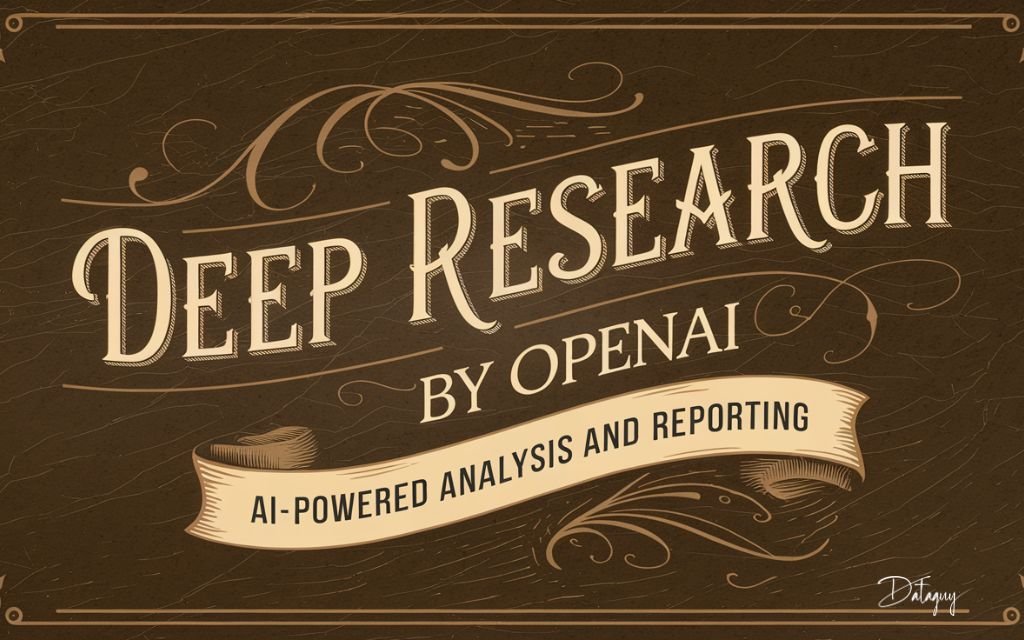Insights Index
ToggleDeep Research by OpenAI: The AI-Powered Research Agent for Complex Tasks
Artificial Intelligence is transforming research, and OpenAI has taken a significant leap forward with Deep Research—an autonomous AI agent designed to conduct multi-step investigations across the web. Unlike conventional chatbots that generate responses based on static datasets, Deep Research actively browses the internet, interprets information, and synthesizes well-structured reports.
Let’s explore what Deep Research is, how it works, and what makes it a game-changer for knowledge workers and professionals.
What is Deep Research?
Deep Research is OpenAI’s latest agentic capability embedded within ChatGPT. This AI agent autonomously handles complex research tasks that would typically require hours of manual work. Using an advanced version of OpenAI’s upcoming o3 model, it searches, analyzes, and consolidates data from hundreds of online sources, including text, images, and PDFs.
Key Features and Capabilities
1. Autonomous Multi-Step Planning
Deep Research doesn’t just provide quick summaries—it strategically plans and executes multiple research steps, dynamically adjusting to new findings along the way.
2. Diverse Data Processing
- Text-based articles
- PDFs
- Images
- User-uploaded files and spreadsheets
3. Synthesis of Comprehensive Reports
- Summaries of key findings
- Cited references to all sources used
- Visual aids like graphs and embedded images
- Bullet-pointed insights for easy reference
4. High-Level Performance on AI Benchmarks
- Humanity’s Last Exam: Scored 26.6% accuracy, significantly higher than models like GPT-4o and Claude 3.5 Sonnet.
- GAIA Benchmark: Achieved a new state-of-the-art (SOTA) performance, excelling in reasoning, multimodal fluency, and real-world question-solving.
How to Use Deep Research
- Select Deep Research Mode: In the message composer, choose the “Deep Research” option.
- Enter Your Query: Provide a detailed research prompt—e.g., “Compare the best commuter bikes in 2024.”
- Attach Contextual Files: Upload spreadsheets or PDFs if needed.
- Let It Work: Deep Research may take 5 to 30 minutes to complete its analysis.
- Receive Your Report: A full breakdown of the findings, including references, visual elements, and reasoning steps.
A key difference from GPT-4o is that Deep Research prioritizes depth over speed. If you need real-time responses, GPT-4o is ideal. But for detailed, well-cited insights, Deep Research is the superior choice.
Limitations and Challenges
- Fact Hallucinations: Though lower than other AI models, inaccuracies can still occur.
- Confidence Calibration Issues: The AI may struggle to express uncertainty effectively.
- Compute-Intensive Process: Currently available only to Pro users with a limit of 100 queries per month.
- Formatting Errors: Minor inconsistencies in report structuring and citations at launch.
However, OpenAI is actively working on enhancements to mitigate these issues.
Future Enhancements and Roadmap
- Faster, Cost-Effective Versions: Optimizing model efficiency to allow higher usage limits.
- Mobile and Desktop Integration: Rolling out access to mobile and desktop ChatGPT soon.
- Embedded Visualizations: Adding graphs, tables, and interactive elements for enhanced reports.
- Specialized Data Access: Future updates may allow integration with subscription-based and internal databases for enterprise users.
Looking ahead, OpenAI envisions a fully agentic AI ecosystem, where Deep Research works alongside Operator, an AI agent designed for executing real-world tasks.
Final Thoughts
Deep Research is a game-changing AI tool that enhances how we approach online research and information synthesis. By independently browsing, analyzing, and compiling detailed reports, it significantly reduces the time and effort required for complex investigations.
While it’s still evolving, its early successes in reasoning, research, and reporting indicate that we’re moving toward a future where AI plays an even greater role in knowledge work. As OpenAI continues refining Deep Research, it’s clear that AI-driven research agents will become an indispensable part of professional and academic workflows.

